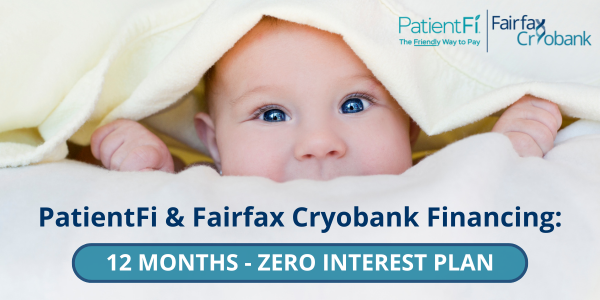How Endometriosis Can Impact Fertility

March is National Endometriosis Awareness Month, a time to shed light on the disease and its implications. Not only does endometriosis cause painful symptoms, it’s also a common cause of infertility. 30-50% of people with endometriosis can experience infertility.
Endometriosis is growing in visibility due to its widespread presence and the need for more understanding in the medical community. In the US, it’s estimated that 5-10% of people of reproductive age have endometriosis. However, symptoms of endometriosis are often misdiagnosed, and diagnosis is frequently delayed.
Endometriosis occurs when tissue similar to the lining of the uterus develops outside of the uterus, where it doesn’t belong. It commonly grows around the ovaries, fallopian tubes, pelvis, and the gastrointestinal tract. Endometriosis may start at someone’s first menstrual period and end at menopause.

Endometriosis functions similarly to the lining of the uterus. During menstruation, like the uterine lining, endometriosis tissue breaks down and bleeds. Endometriosis can cause severe pain, especially during menstruation or penetrative sex.
How can endometriosis affect infertility?
Endometriosis impacts fertility by affecting how well the reproductive organs, like the fallopian tubes and ovaries, can function. When endometriosis grows on the ovaries, it may cause cysts, often called “chocolate cysts,” due to the dark brown endometrial fluid inside them. Endometriosis causes inflammation and may lead to bands of scar tissue called adhesions. Adhesions can cause organs to stick together and make it hard to get pregnant.
For women and people with ovaries, fertility occurs when the ovary releases a mature egg. The egg then travels down the fallopian tube, and if it meets with sperm, fertilization can occur. With endometriosis, scarring can create blockages in the fallopian tubes, impairing an egg’s journey. Endometriosis can also damage sperm or eggs before implantation occurs.
Providers typically score endometriosis in stages from 1 to 4, with four being the most severe. In more advanced stages of endometriosis, the condition may lead to diminished ovarian reserve. Ovarian reserve is the number and quality of eggs in the ovaries.
What causes endometriosis?
Unfortunately, the exact cause of endometriosis is unknown. There’s also no way to prevent the condition. Although pinpointing the reason behind the disease is impossible, there are a few theories on why it can occur.
Genetics: Endometriosis tends to run in families.
Blood or lymph system transport: Blood or lymphatic systems may transport endometrial tissue to other areas of the body.
Immune conditions: When the immune system is impaired, it may struggle to identify and rid the body of endometriosis tissue. Endometriosis is associated with autoimmune conditions.
What are the symptoms of endometriosis?

The most common symptom of endometriosis is pelvic pain. But the chronic condition also causes the following.
- Painful periods
- Painful intercourse
- Painful urination or bowel movements
- Excessive bleeding
- Infertility
- Other symptoms include lower back pain, fatigue, depression, bloating or nausea, diarrhea, or constipation.
There is little correlation between how painful endometriosis is and the severity of the condition. This means that you could have a small amount of endometriosis with a lot of pain. You can also have severe endometriosis, never struggle with fertility, and not have pain.
How is endometriosis diagnosed?
A provider can diagnose endometriosis in a few ways. Not all endometriosis can be diagnosed non-invasively or without surgery. Laparoscopy is the gold standard for diagnosing endometriosis, though providers may suspect the condition based on symptoms or ultrasound results.
Transvaginal ultrasound: A transvaginal ultrasound takes pictures of the inside of the body, looking at the reproductive organs for signs of endometriosis.
Magnetic Resonance Imaging (MRI): An MRI uses magnetic fields and radio waves to capture images of the organs and detect endometriosis.
Laparoscopy: During a laparoscopy, a provider makes a small cut in the abdomen and inserts a thin tube with a light and a camera. The doctor looks at the tissues in and around the uterus and checks for signs of lesions.
Treatment for Endometriosis
There is no cure for endometriosis, but treatments can help manage the condition. Typically, treatments include medication, surgery to remove endometriosis tissue, or a combination of medication and surgery. Medications include pain management and hormones. Treatment is highly individualized and based on the severity of the condition, pain, and location.
Treating Infertility Caused by Endometriosis
While endometriosis can cause infertility, it doesn’t automatically mean you’ll have difficulty getting pregnant. Mild cases of endometriosis may only temporarily impact fertility. If you’ve been trying to get pregnant and suspect you may have endometriosis, it might be time to see a specialist. With endometriosis, time is of the essence.
Treatment for infertility caused by endometriosis depends on someone’s age, length of infertility, and location and stage of endometriosis. Some studies show that surgery for mild endometriosis may be helpful before pregnancy, but for more severe stages, it can have negative impacts. When a specialist reviews your medical history, they might suggest a few treatment options based on your goals and condition.
Fertility Preservation
Freezing your eggs may be for you if you’re planning on becoming pregnant in the future. Because endometriosis can worsen in severity over time, egg freezing can preserve the quality of your eggs.
IVF
In vitro fertilization (IVF) is another common option for endometriosis infertility. IVF involves fertilizing an egg outside of the body and implanting the fertilized egg or eggs (embryo) into the uterus. For those with more advanced endometriosis, success rates of IVF are reduced compared to in earlier stages. However, it can still be an effective way to become pregnant.
Superovulation and intrauterine insemination (SO-IUI)
For those with mild cases of endometriosis, IUI combined with superovulation is another course of action that can be helpful. Superovulation is the use of medication to stimulate the ovaries to release 2-3 mature eggs. During IUI, sperm is placed directly in the uterus. IUI is best for those who have no problems with their fallopian tubes.
Fertility treatment for endometriosis is based on the individual, and various treatments can be helpful. Many people with endometriosis go on to have healthy babies.
Looking for more information? Explore our services, resources, and blog pages to learn more.







